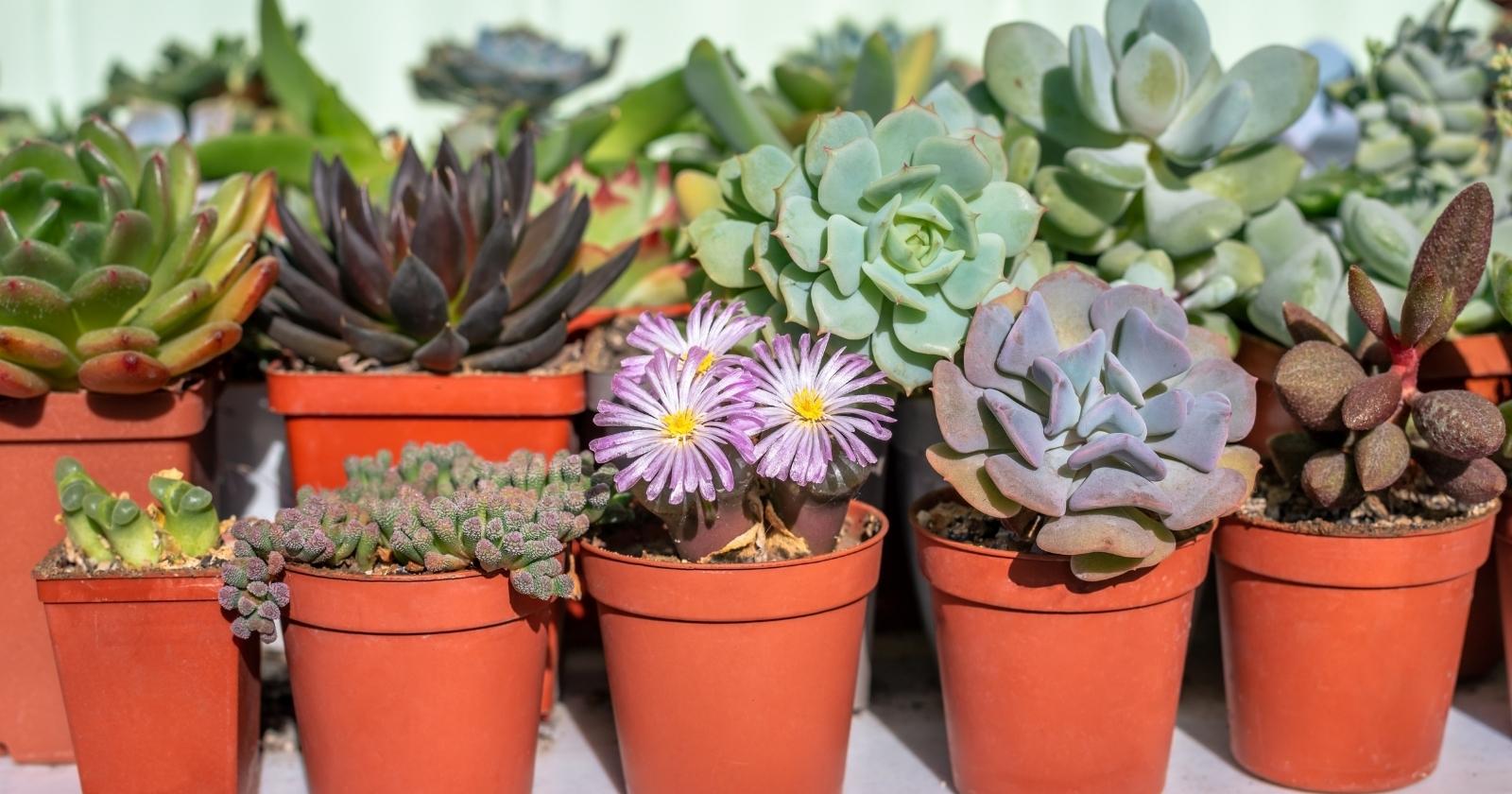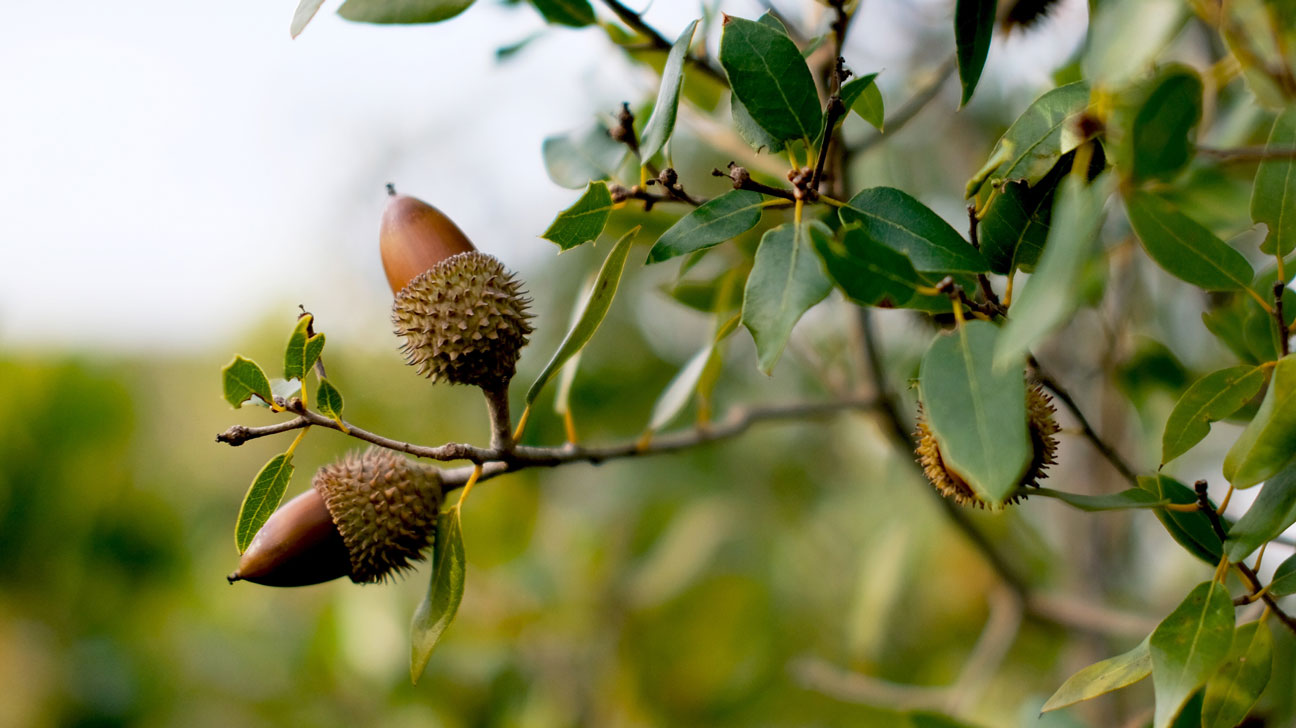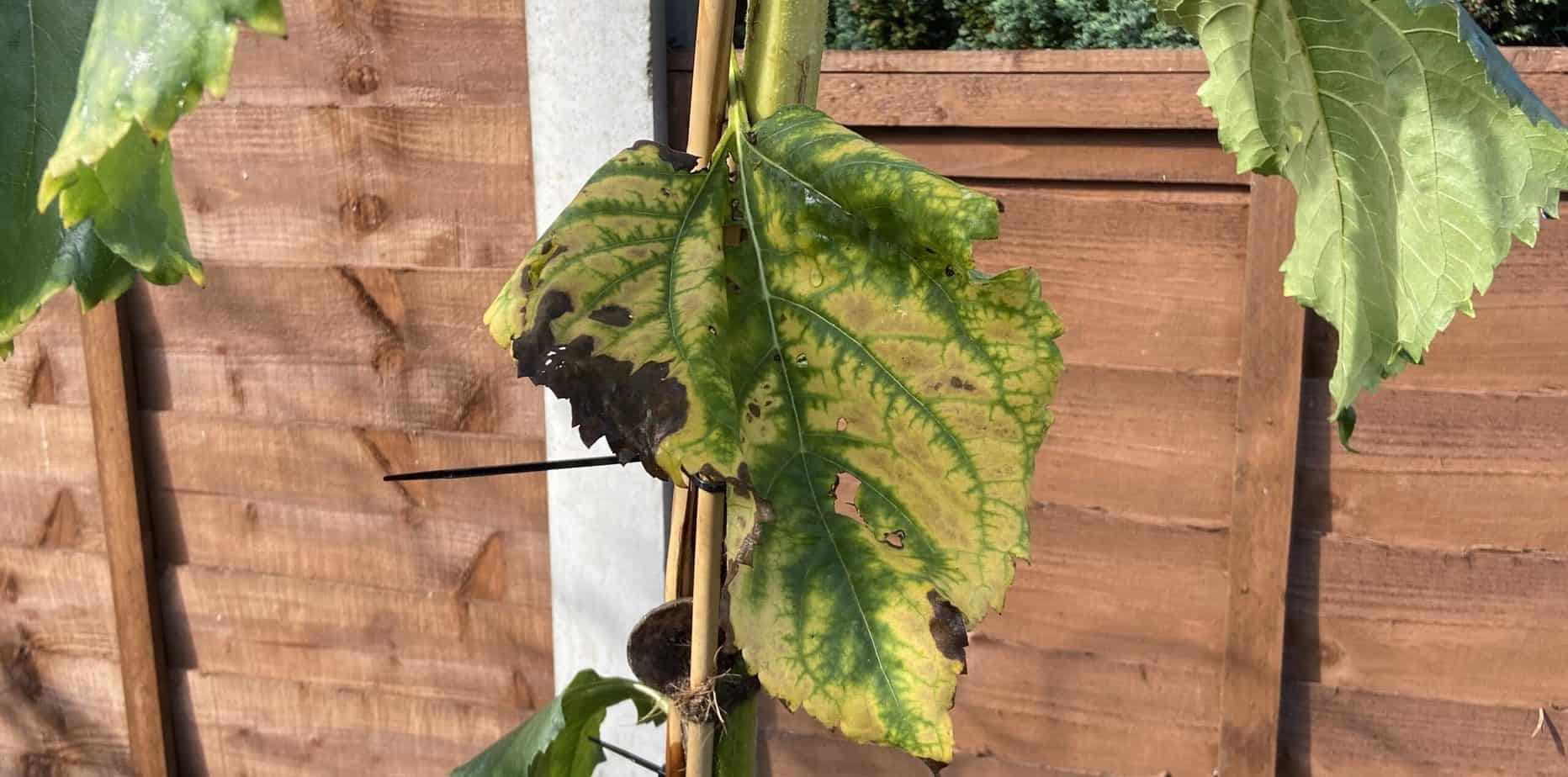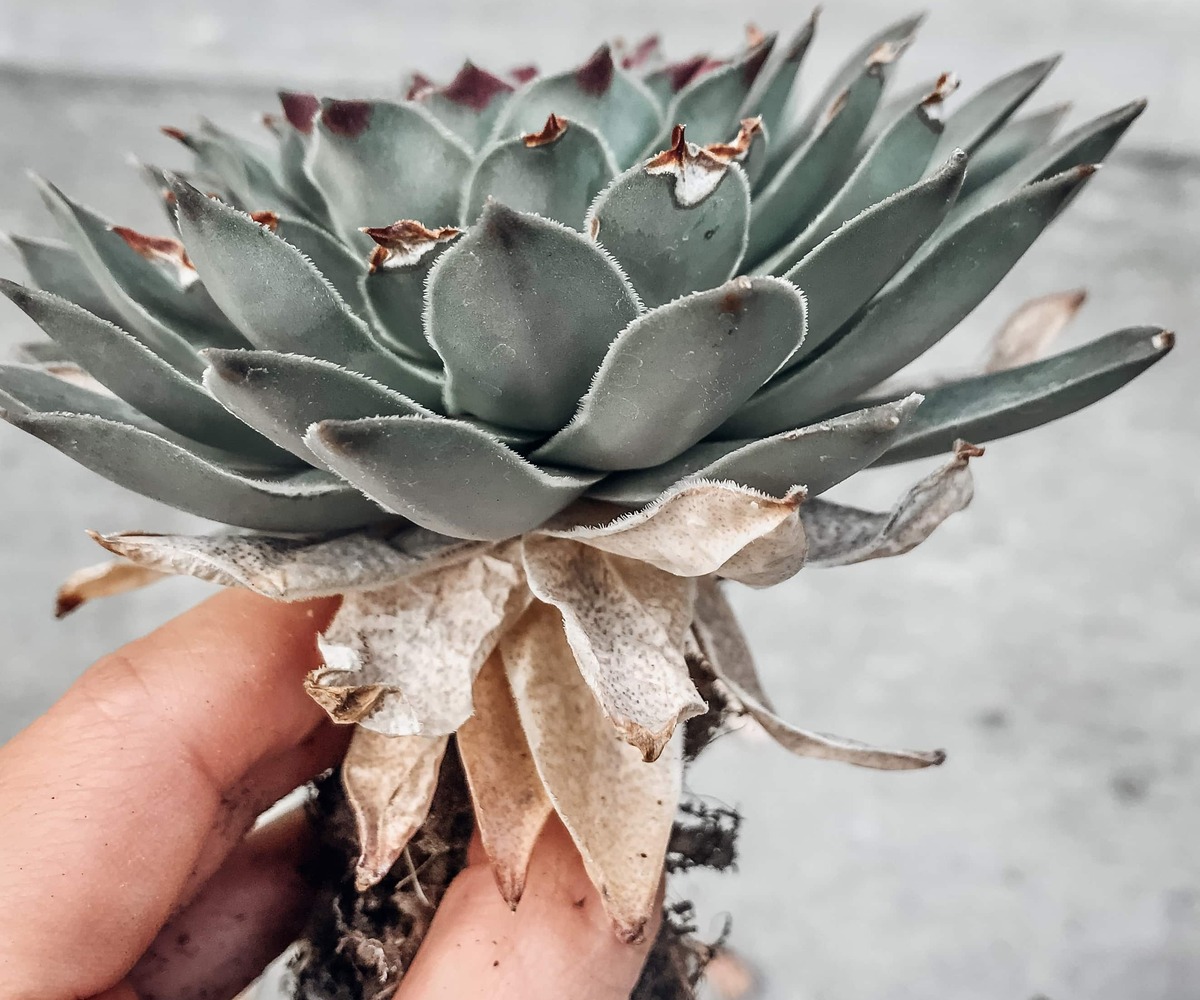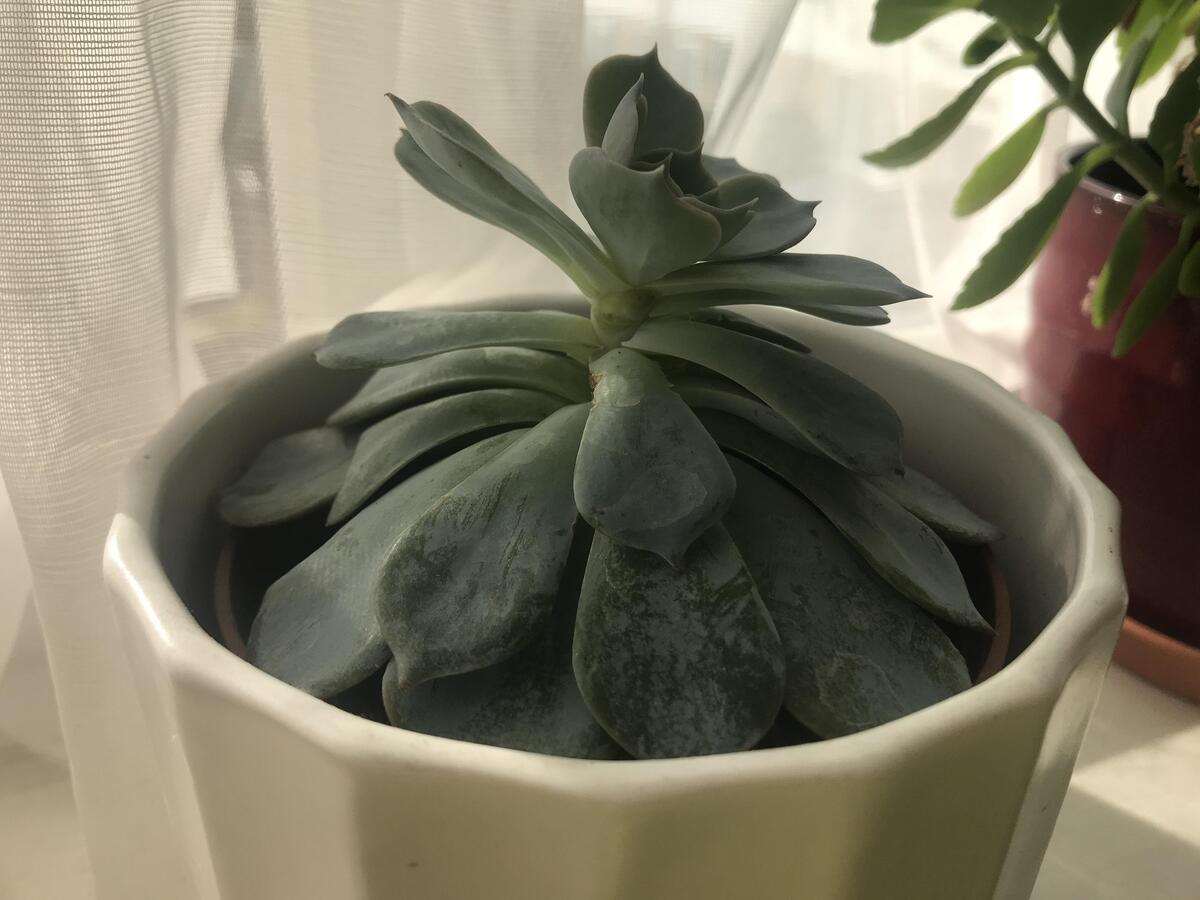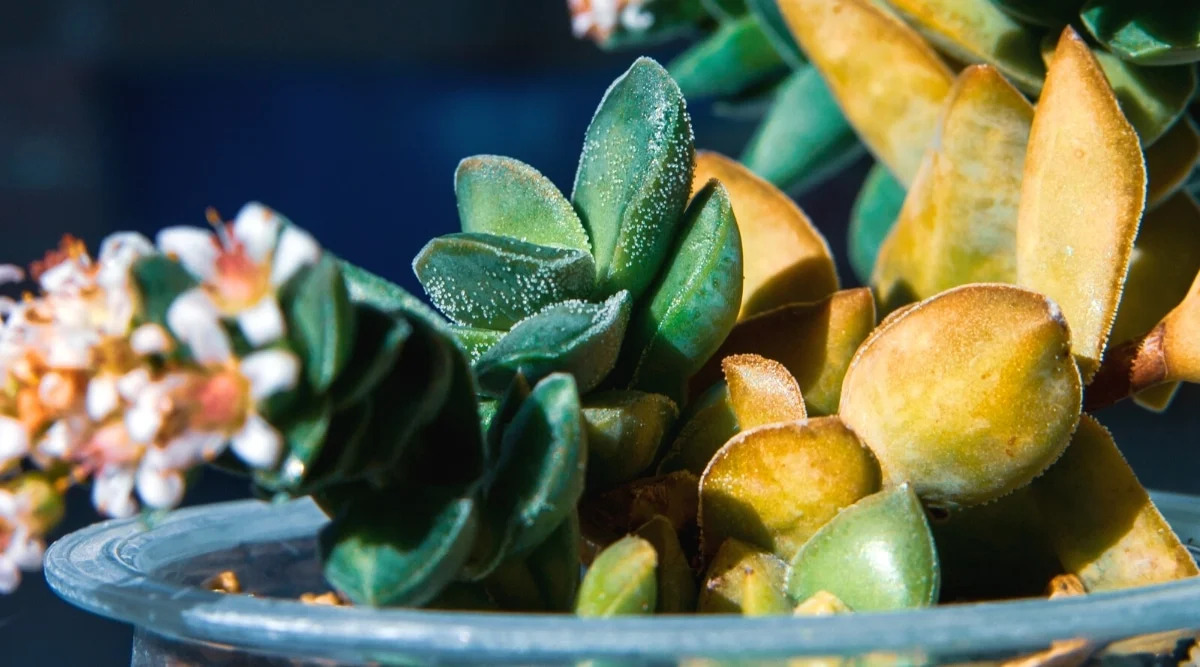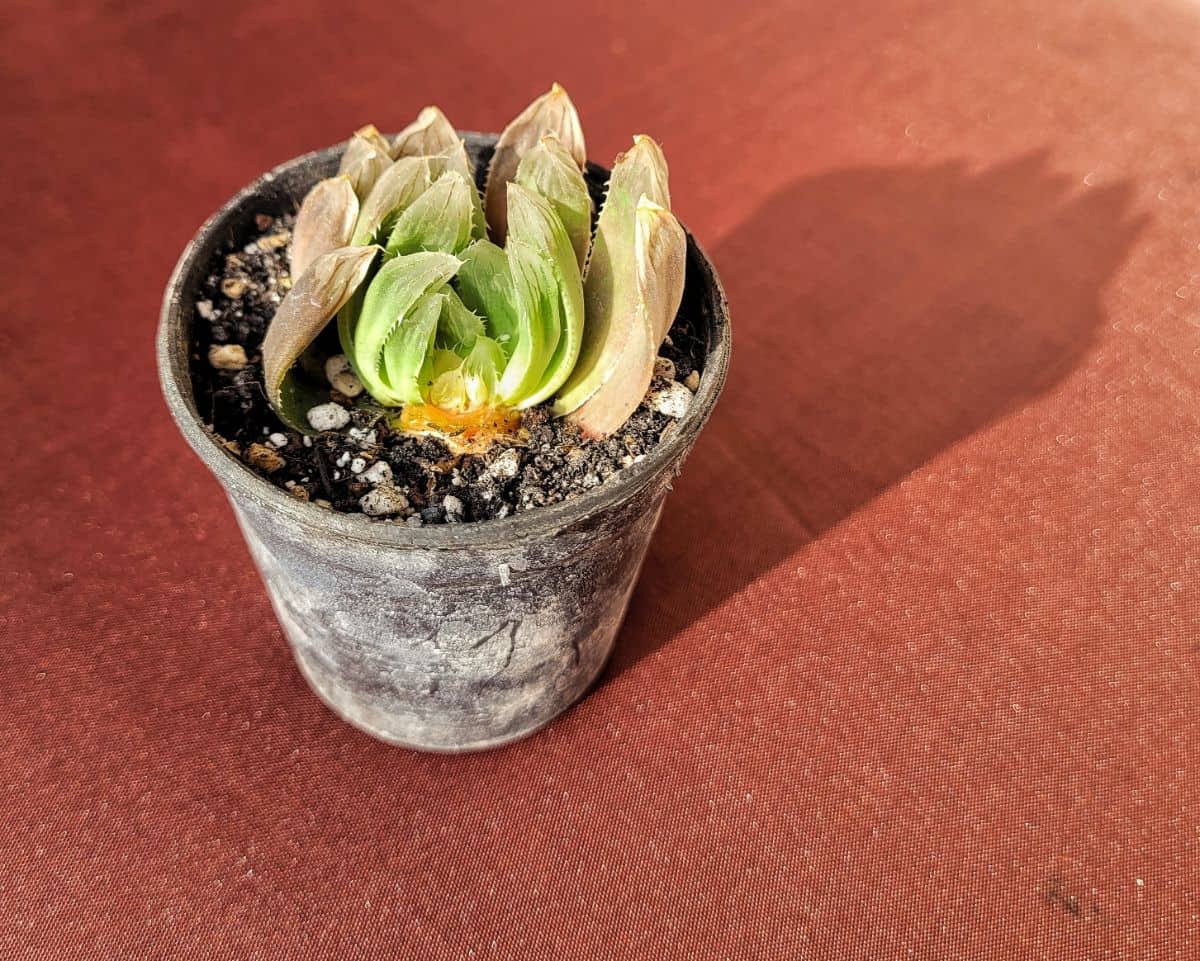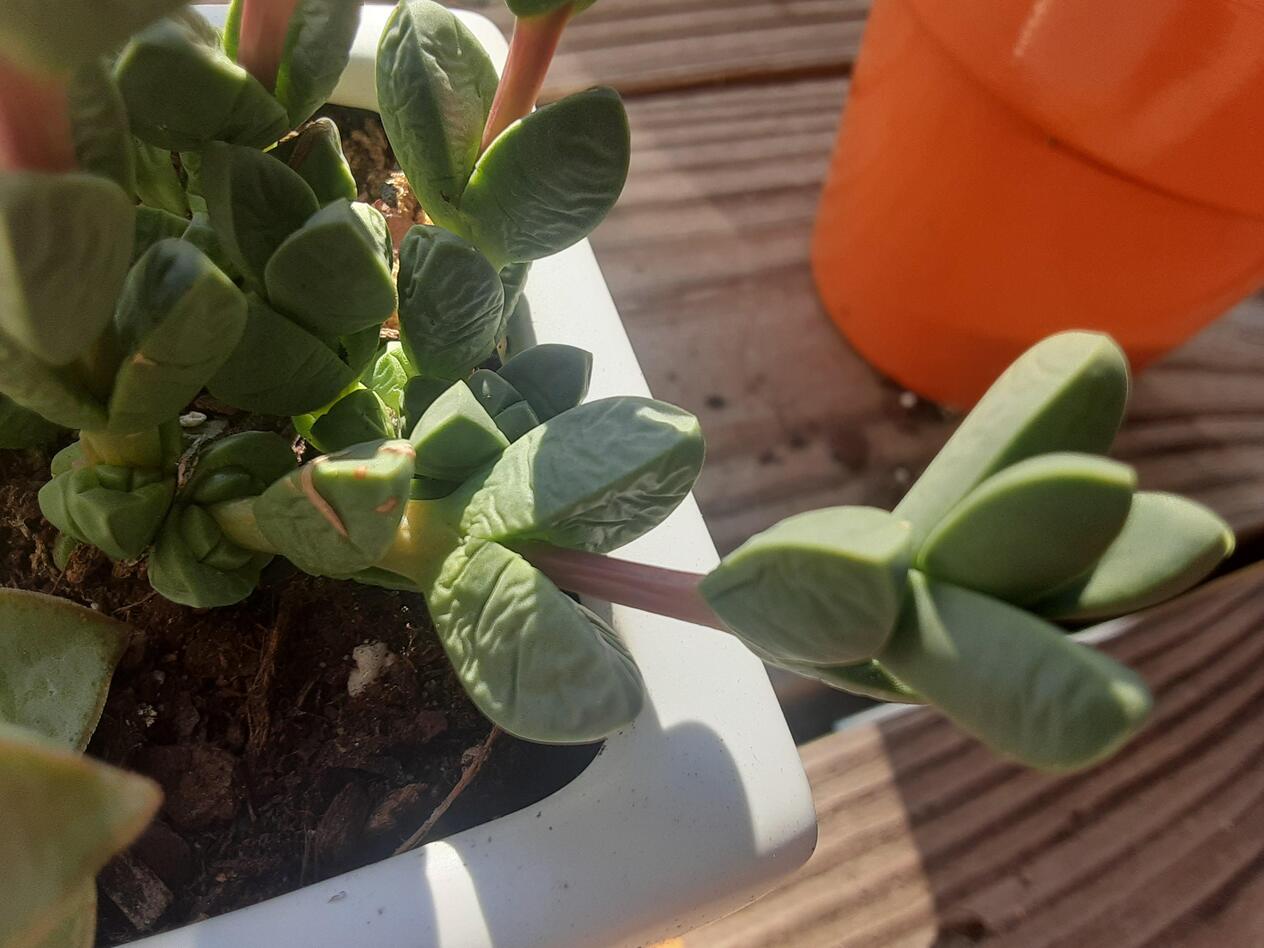Home>Types of Gardening>Ornamental Gardening>Why Do Succulents Drop Leaves
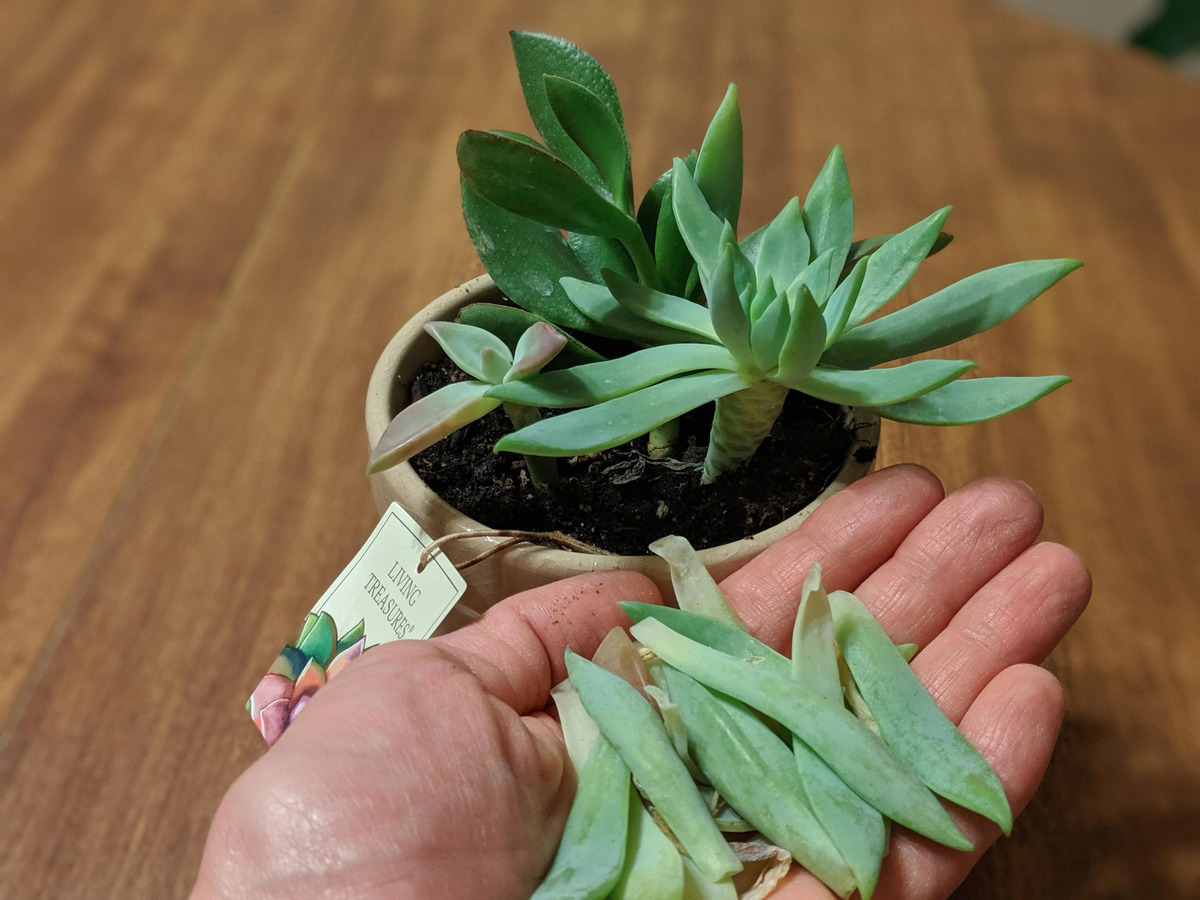

Ornamental Gardening
Why Do Succulents Drop Leaves
Modified: January 22, 2024
Discover why succulent plants drop leaves and learn how to prevent leaf loss in your ornamental gardening endeavors.
(Many of the links in this article redirect to a specific reviewed product. Your purchase of these products through affiliate links helps to generate commission for Chicagolandgardening.com, at no extra cost. Learn more)
Table of Contents
Introduction
Welcome to the world of ornamental gardening! Ornamental gardening is a wonderful hobby that allows individuals to beautify their outdoor spaces with a variety of stunning plants and flowers. One aspect of ornamental gardening that has gained significant popularity in recent years is succulent plants. These unique, water-storing plants come in a wide array of shapes, sizes, and colors, making them a favorite choice for many garden enthusiasts.
However, as beautiful as succulents are, they can sometimes present a challenge to their caretakers. One common issue that many succulent owners encounter is the dropping of leaves. It can be disheartening to see your once-thriving succulent losing its foliage, leaving you wondering if you’re doing something wrong.
In truth, succulents dropping leaves can be caused by a variety of factors, ranging from environmental conditions to watering practices. Understanding the underlying reasons behind this phenomenon is crucial in order to provide the proper care and ensure the health and longevity of your succulents.
In this article, we will delve into the different factors that can contribute to succulent leaf drop. We will explore how environmental conditions, watering habits, sunlight exposure, pest infestations, and even natural aging all play a role in the leaf-dropping process. By gaining a comprehensive understanding of these factors, you will be equipped with the knowledge to prevent and address leaf drop effectively.
Now, let’s embark on this journey to discover the various causes of succulent leaf drop and learn how to help our beloved plants thrive!
Environmental Factors
The environment in which a succulent is placed plays a significant role in its overall health and well-being. Environmental factors such as temperature, humidity, and airflow can directly impact the condition of the plant and contribute to leaf drop.
One common environmental factor that can cause succulent leaf drop is extreme temperatures. Succulents are naturally adapted to thrive in arid and desert-like conditions, so they prefer warm temperatures. However, they do have their limits. Exposure to excessively high or low temperatures can stress the plants, leading to leaf drop. It is essential to provide adequate insulation during extreme weather conditions to protect your succulents.
Another crucial aspect to consider is humidity. Succulents originate from regions with low humidity levels, so excess moisture in the air can be detrimental to them. High humidity can cause the leaves to become soft and mushy, leading to leaf drop. To ensure optimal humidity levels, make sure to place your succulents in well-ventilated areas with good air circulation.
Furthermore, the lack of airflow can also contribute to leaf drop. Stagnant air can create a breeding ground for fungal diseases, which can lead to leaf decay and eventual drop. Ensuring proper ventilation is crucial to prevent the buildup of stagnant air and maintain the overall health of your succulents.
Lastly, it’s worth noting that sudden changes in environmental conditions can also cause succulents to drop their leaves. Moving a succulent from one location to another with drastically different light, temperature, or humidity levels can shock the plant, leading to leaf drop. If you need to relocate your succulent, it’s best to do so gradually, allowing the plant to acclimate to its new environment over time.
By paying attention to these environmental factors and providing the optimal conditions for your succulents, you can minimize the chances of leaf drop and ensure that your plants thrive in their surroundings.
Overwatering
Overwatering is one of the most common reasons why succulents may drop their leaves. Succulents have evolved to survive in dry conditions and store water in their leaves and stems. When they receive too much water, their root systems become saturated, leading to root rot and ultimately causing the plant to shed its leaves.
One of the main causes of overwatering is a lack of understanding about the watering needs of succulents. Many people make the mistake of applying the same watering techniques used for other types of plants to succulents. Succulents have different watering requirements and should be watered sparingly due to their ability to store water.
Another common mistake is watering succulents too frequently. Succulents thrive in well-draining soil and are adapted to withstand extended periods without water. Watering too often, especially when the soil has not fully dried out between waterings, can lead to waterlogged roots and cause the leaves to drop.
To prevent overwatering, it’s important to adopt a water-saving approach when caring for succulents. Allow the soil to dry out completely before watering again. To determine if it’s time to water, insert your finger into the soil about an inch deep. If it feels dry, it’s time to water. However, if it still feels moist, hold off on watering and check again in a few days.
In addition to proper watering practices, using a well-draining soil mix specifically designed for succulents is essential. These soil mixes typically contain materials such as perlite or vermiculite, which improve drainage and prevent excess water retention.
Remember, succulents are adapted to withstand dry spells and prefer being underwatered rather than overwatered. By adopting a careful and deliberate approach to watering, you can avoid overwatering your succulents and help them retain their beautiful leaves.
Underwatering
While overwatering can be detrimental to succulents, underwatering is equally problematic and can lead to leaf drop. Succulents are adapted to survive in arid environments with limited water availability, but they still require regular hydration to grow and thrive.
Underwatering occurs when succulents do not receive enough water to meet their needs. This can happen due to various reasons, including infrequent watering, incorrect watering techniques, or inadequate water absorption.
One of the common mistakes made by succulent caregivers is infrequent watering. Since succulents are known for their water-storing abilities, it’s easy to assume that they can go without water for extended periods. However, prolonged drought can stress the plant and force it to shed its leaves as a survival mechanism.
Incorrect watering techniques can also contribute to underwatering. Watering succulents shallowly or only wetting the surface of the soil without allowing the water to penetrate deeper can cause the roots to stay dry. The roots need to absorb water from the deeper layers of soil to effectively hydrate the plant.
Additionally, inadequate water absorption can occur if the soil is too compacted or lacks proper drainage. Succulents prefer a well-draining soil mix that allows excess water to flow out easily, preventing root rot. If the soil retains water for too long, the roots can become waterlogged, leading to leaf drop.
To prevent underwatering, it’s important to establish a regular watering routine for your succulents. Water them deeply, allowing the water to thoroughly penetrate the soil and reach the roots. However, always ensure that the soil has dried out between waterings to avoid overwatering.
When determining if it’s time to water, consider the appearance and feel of the leaves. Succulents with wrinkled or shriveled leaves are a sign that they require immediate watering. Also, keep an eye out for signs of dehydration, such as the soil pulling away from the sides of the pot or the plant appearing wilted.
By providing adequate and regular hydration to your succulents, you can prevent underwatering and help them maintain their beautiful leaves.
Lack of Sunlight
Succulents are sun-loving plants that thrive in bright, direct sunlight. They have evolved to store water in their leaves, enabling them to withstand long periods of intense sunlight. However, a lack of sunlight can have detrimental effects on succulents and lead to leaf drop.
When succulents don’t receive enough sunlight, they may stretch or elongate in an attempt to reach for light. This stretching, known as etiolation, results in weak and elongated growth. Along with this, succulents deprived of sunlight may also have pale or yellowish leaves.
Insufficient sunlight can disrupt the metabolic processes of succulents, making it difficult for them to produce energy through photosynthesis. Without adequate energy production, the plant may prioritize survival over leaf maintenance, leading to leaf drop.
If you notice your succulents are not receiving enough sunlight, it’s important to provide them with the light they need. Place them in a location where they can receive at least six hours of bright, indirect sunlight each day. South or west-facing windows are ideal spots for indoor succulents, while outdoor plants can benefit from being in a sunny and well-lit area of the garden.
In situations where natural sunlight is limited or not available, artificial grow lights can be used as a substitute. These lights mimic the spectrum of natural sunlight and provide the necessary light energy for succulents to thrive.
While succulents are resilient and can tolerate some shade, prolonged lack of sunlight will eventually result in leaf drop. By ensuring your succulents receive adequate sunlight, you can promote healthy growth, vibrant foliage, and reduce the risk of leaf drop.
Temperature Fluctuations
Temperature fluctuations can have a significant impact on the health of succulents and contribute to leaf drop. While succulents are known for their ability to withstand hot and dry conditions, they are still sensitive to sudden or extreme changes in temperature.
Rapid temperature fluctuations, such as going from hot to cold or vice versa, can shock the plant and cause stress. This stress can manifest in various ways, including leaf drop. When succulents are exposed to sudden cold temperatures, their cells can rupture, leading to damage and eventual leaf loss.
Similarly, sudden exposure to high temperatures can dehydrate the succulent, causing the leaves to wilt and shrivel. The plant may shed its leaves as a protective response to conserve energy and moisture in extreme heat.
It’s important to note that succulents have different temperature requirements based on their specific species. While most succulents prefer warm temperatures between 60°F and 85°F (15°C to 29°C), some varieties can tolerate lower or higher temperatures. Understanding the temperature preferences of your succulents and providing the appropriate conditions will help prevent leaf drop.
To protect your succulents from temperature fluctuations, provide them with a stable and consistent environment. Avoid placing them in areas with drafts, such as near air conditioning vents or windows that are frequently opened. If you live in a climate with extreme temperature variations, consider moving your potted succulents indoors during periods of extreme heat or cold.
In colder climates, it’s crucial to protect succulents from frost and freezing temperatures, as these can be particularly damaging. Use frost blankets or move potted succulents indoors before the onset of winter to shield them from colder temperatures.
By ensuring that your succulents are exposed to a stable and suitable temperature range, you can help them maintain their foliage and minimize the risk of leaf drop due to temperature fluctuations.
Pests and Diseases
Pests and diseases can wreak havoc on succulents and lead to leaf drop if left untreated. While succulents are generally hardy plants, they can still fall victim to a range of common pests and diseases.
One of the most notorious pests that can affect succulents is the mealybug. Mealybugs are small, soft-bodied insects that attach themselves to the leaves and stems of plants, sucking out their sap. The presence of mealybugs can weaken the succulent and cause its leaves to drop. Other common pests that can infest succulents include aphids, spider mites, and scale insects.
Diseases can also contribute to leaf drop in succulents. Fungal infections, such as root rot and powdery mildew, can affect the health of the plant and cause leaf decay. Overwatering, poor drainage, and high humidity levels can create an environment conducive to fungal growth. Bacterial infections, such as soft rot, can also lead to leaf drop and overall plant decline.
To prevent and treat pest infestations, regular inspections of your succulents are crucial. Look out for signs of pest activity, such as webbing, discolored leaves, or small insects on the plant. If you notice any pests, isolate the affected plant and take appropriate measures to eradicate them. This may include using insecticidal soaps, neem oil, or natural predators like ladybugs.
To prevent and manage fungal diseases, it’s important to practice good cultural practices. Avoid overwatering, ensure proper drainage, and maintain good air circulation around the plants. If you suspect fungal infection, treat the affected areas with a suitable fungicide following the manufacturer’s instructions.
Regularly cleaning and disinfecting your gardening tools can also help prevent the spread of pests and diseases between plants. Additionally, keeping a close eye on the overall health of your succulents and addressing any issues promptly will reduce the risk of leaf drop caused by pests and diseases.
By taking proactive measures and keeping your succulents healthy and pest-free, you can minimize the chances of leaf drop and ensure the longevity of your beloved plants.
Aging and Natural Shedding
Just like any living organism, succulents go through a natural aging process. As succulents mature, they may naturally shed some of their older leaves. This is a normal occurrence and should not be cause for concern.
As a succulent grows and produces new leaves, the older leaves towards the bottom of the plant may naturally wither and drop off. This shedding is a way for the plant to redirect energy and resources towards new growth. It’s a natural process of rejuvenation and is often more noticeable during the spring and summer months when succulents are actively growing.
Some succulents, such as those in the genus Senecio, have a characteristic “leggy” appearance as they age. This is due to the lower leaves falling off and the stem elongating. While this can be unsightly to some, it is a normal part of the plant’s growth pattern.
It’s important to differentiate between natural leaf drop and abnormal leaf drop. Natural leaf drop typically occurs gradually, with older leaves gradually yellowing and falling off. Abnormal leaf drop, on the other hand, is sudden and widespread, often accompanied by other signs of stress or disease.
To ensure that your succulents maintain their vitality as they age, provide them with proper care and maintenance. This includes providing adequate sunlight, watering correctly, and addressing any pest or disease issues promptly.
Remember that minor leaf drop due to aging is a normal part of a succulent’s life cycle and should not be a cause for alarm. As long as the overall health of the plant is maintained, new growth will continue to emerge, and your succulent will remain beautiful and resilient for years to come.
Nutritional Deficiencies
Nutritional deficiencies can significantly impact the health of succulents and contribute to leaf drop. Succulents, just like any other plants, require essential nutrients to grow and thrive. When these nutrients are lacking or imbalanced, succulents may not be able to sustain healthy leaf growth.
One common nutritional deficiency in succulents is a lack of nitrogen. Nitrogen is a vital macronutrient that plays a crucial role in promoting leaf development and overall plant growth. Insufficient nitrogen can lead to pale or yellowing leaves and eventual leaf drop. It’s important to provide succulents with a balanced fertilizer that includes nitrogen to address this deficiency.
Another important nutrient for succulents is phosphorus. Phosphorus aids in root development, flower production, and energy transfer within the plant. When succulents lack phosphorus, they may exhibit stunted growth, weak stems, and thin, discolored leaves. Using a fertilizer specifically formulated for succulents can help provide the necessary phosphorus for healthy growth.
Potassium deficiency can also contribute to leaf drop in succulents. Potassium is responsible for maintaining water balance, promoting root growth, and strengthening plant tissues. Succulents lacking potassium may display brown or scorched leaf edges and weak overall growth. Incorporating a potassium-rich fertilizer into your succulent care routine can help combat this deficiency.
In addition to these macronutrients, succulents also require adequate amounts of micronutrients, such as iron, magnesium, and calcium. These nutrients are essential for various physiological processes, including chlorophyll production, enzyme activation, and cell structure formation. If succulents are deficient in these micronutrients, it can lead to leaf discoloration, leaf deformities, and ultimately, leaf drop.
To prevent nutritional deficiencies, it’s important to provide succulents with a well-balanced fertilizer formulated specifically for their needs. Follow the instructions on the fertilizer package and apply it in moderation to avoid nutrient imbalances or burn. Additionally, incorporating organic matter, such as compost or well-decomposed manure, into the soil can help improve nutrient availability.
Regularly monitor the appearance of your succulents’ leaves for any signs of nutrient deficiency. If you notice discoloration, yellowing, or other abnormal leaf symptoms, consider adjusting your fertilization routine or seeking advice from a horticulturist or plant specialist.
By ensuring that your succulents receive adequate nutrition, you can promote healthy leaf growth and reduce the risk of leaf drop caused by nutrient deficiencies.
Root Rot
Root rot is a severe condition that can cause succulents to experience leaf drop. It occurs when the roots of the plant become infected and damaged by fungal pathogens. This condition is primarily caused by overwatering or improper drainage, which creates a damp and stagnant environment, ideal for fungal growth.
When succulent roots are consistently exposed to excess moisture, they become waterlogged and lack the necessary oxygen. This creates the perfect conditions for fungi to thrive and attack the roots, leading to root rot. As the roots deteriorate, the plant’s ability to absorb water and nutrients is compromised, resulting in leaf drop.
One of the first signs of root rot is typically yellowing or browning of the lower leaves. These leaves may appear mushy or wilted. As the disease progresses, the plant may lose more leaves, eventually leading to overall decline and possible death if left untreated.
To prevent root rot, it’s crucial to establish proper watering practices for your succulents. Allow the soil to dry out between waterings, ensuring that excess water can freely drain away. Choose a well-draining soil mix specifically formulated for succulents, which typically contains ingredients like perlite or pumice to improve drainage.
If you suspect root rot in your succulent, it’s important to take immediate action. Remove the affected plant from its pot and carefully inspect the roots. Healthy roots will be firm and white, while rotting roots will be mushy, discolored, or have a foul odor. Trim away any diseased roots using sterilized pruning tools.
After removing the affected roots, allow the plant to dry out completely before repotting it in fresh, well-draining soil. Avoid watering the plant for a few days to allow the roots to recover and ensure a dry environment that discourages further fungal growth.
Preventing root rot includes maintaining good hygiene practices with your succulents. Clean and disinfect pots and gardening tools regularly to limit the spread of fungal pathogens. Avoid reusing overly wet or contaminated soil, and practice proper spacing between plants to promote air circulation.
By implementing correct watering techniques, ensuring proper drainage, and maintaining hygienic practices, you can prevent the occurrence of root rot and help your succulents retain their leaves and overall health.
Conclusion
Caring for succulents is a rewarding and enjoyable experience, but it’s not without its challenges. Understanding the various factors that can contribute to succulent leaf drop is essential in providing proper care and ensuring the health and longevity of these beautiful plants.
Environmental factors such as temperature fluctuations, lack of sunlight, and improper airflow can stress succulents and lead to leaf drop. Overwatering or underwatering succulents can also cause leaf loss, as can nutritional deficiencies and root rot.
However, with proper knowledge and care, it is possible to mitigate these issues and maintain healthy succulents. By providing the right amount of sunlight, water, and nutrients, and ensuring proper drainage and ventilation, you can create an ideal environment for your succulents to thrive.
Regular inspection and monitoring of your succulents can help detect and address any potential problems promptly. This includes identifying and treating pest infestations, managing diseases, and taking preventive measures to avoid nutrient deficiencies.
Remember that some leaf drop in succulents is a natural part of their growth and aging process. As long as the overall health of the plant is maintained, new growth will continue to emerge, and your succulents will continue to beautify your space.
With a little bit of knowledge and care, you can enjoy the beauty and resilience of succulents in your ornamental garden. So, embrace the wonder of these unique plants, and watch as they flourish and bring you joy with their stunning foliage and remarkable ability to adapt to their surroundings.

